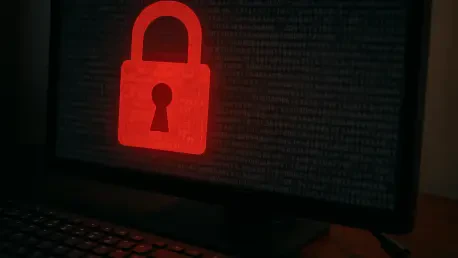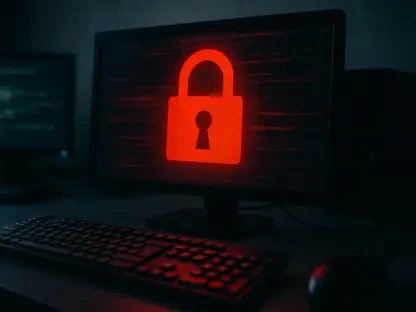In an era where digital infrastructure underpins nearly every aspect of corporate operations, a single undetected flaw can expose entire systems to devastating breaches, and zero-day vulnerabilities—previously unknown flaws in software—have become prime targets for cybercriminals. These threats strike organizations with little to no warning, as demonstrated by a significant cybersecurity incident involving Logitech, a leading technology manufacturer, which faced a breach through a third-party software platform. This review delves into the exploitation of zero-day vulnerabilities as a critical challenge in modern cybersecurity, examining the incident’s details, the technology involved, and the broader implications for enterprise security.
Overview of the Incident and Technology Context
The cybersecurity breach at Logitech, disclosed in a filing with the Securities and Exchange Commission, highlights the perilous nature of zero-day vulnerabilities within third-party software ecosystems. Hackers gained unauthorized access to internal IT systems by exploiting an undetected flaw in a widely used software platform, copying limited data related to employees, customers, and suppliers. This incident underscores the growing risk posed by sophisticated cyber threats targeting enterprise tools, where even robust organizations can fall victim to unseen weaknesses.
Zero-day vulnerabilities represent a particularly insidious challenge in cybersecurity, as they are flaws unknown to vendors or users until exploited. The technology at the heart of this breach—third-party enterprise software—serves as a backbone for countless businesses, managing critical operations and data. When such platforms harbor undetected vulnerabilities, they become gateways for cybercriminals, amplifying the potential scale of damage across multiple organizations simultaneously.
The relevance of this incident extends beyond a single company, reflecting a systemic issue in the tech industry. With cybercriminal groups becoming increasingly adept at identifying and exploiting these flaws, the incident serves as a stark reminder of the urgent need for enhanced security measures. This review focuses on dissecting the exploited technology and evaluating its performance under attack, alongside the response mechanisms deployed to mitigate the impact.
Detailed Analysis of the Exploited Technology
Nature of the Vulnerability and Data Exposure
The core issue in this breach lies in a zero-day vulnerability within a third-party software platform, reportedly Oracle’s E-Business Suite, as claimed by the responsible cybercriminal group. This flaw allowed attackers to bypass security controls and access internal systems, extracting data tied to various stakeholders. While the scope of the compromised information was limited, avoiding sensitive details like credit card numbers or national IDs, the breach still posed a significant risk to privacy and trust.
Enterprise software platforms like the one implicated are designed to streamline complex business processes, integrating vast amounts of data across departments. However, their extensive functionality and widespread adoption make them prime targets for exploitation. A single zero-day flaw can compromise not just one organization but an entire network of users, as seen in the broader campaign affecting multiple entities beyond Logitech.
The performance of such technology under attack reveals a critical gap in preemptive security. These platforms, while efficient in operation, often lack real-time detection capabilities for unknown vulnerabilities, leaving organizations vulnerable until a fix is deployed. This incident illustrates how even well-established software can falter when faced with sophisticated, undetected threats.
Response Mechanisms and System Resilience
Upon discovery of the breach, Logitech acted promptly to address the exploited vulnerability, applying a patch provided by the software vendor to seal the entry point. The company reported no disruption to its products, operations, or manufacturing processes, demonstrating a degree of system resilience despite the intrusion. Additionally, cyber insurance coverage mitigated potential financial losses, ensuring minimal economic impact.
The response highlights the importance of rapid mitigation strategies in cybersecurity frameworks. Patching vulnerabilities post-exploitation, while effective in this case, points to a reactive rather than proactive stance—a common limitation in current enterprise software security. The technology’s performance in recovery was adequate, but it raises questions about the adequacy of built-in safeguards to prevent initial access by attackers.
Collaboration between software vendors and affected organizations emerges as a crucial factor in such scenarios. The timely release of a fix by the vendor played a pivotal role in containing the breach, yet it also underscores the dependency on external parties for security updates. This dynamic reveals a structural challenge in ensuring the robustness of third-party software against evolving threats.
Perpetrators and Scale of the Attack
The Clop cybercriminal group, a Russia-based extortion outfit, claimed responsibility for exploiting the zero-day flaw in this incident. Known for targeting popular file transfer and enterprise tools, Clop has a track record of leveraging such vulnerabilities to extort significant sums through data leak threats. Their involvement signals a persistent and highly organized threat to global cybersecurity, exploiting technology at its weakest points.
Beyond Logitech, the campaign affected numerous organizations, with Clop listing victims such as Envoy Air, Harvard University, and The Washington Post on its leak site. The scale of data exposure varied, with some entities reporting thousands of individuals’ information compromised. This widespread impact illustrates how a single flaw in shared technology can cascade across industries, amplifying the destructive potential of zero-day exploits.
The technology’s performance in this broader context reveals a systemic vulnerability in enterprise software ecosystems. While designed for scalability and integration, these platforms often prioritize functionality over security, leaving them susceptible to coordinated attacks by groups like Clop. The incident emphasizes the need for a fundamental reassessment of how such technologies are secured against sophisticated adversaries.
Challenges in Securing Enterprise Software
Zero-day vulnerabilities pose an escalating threat due to their undetectable nature prior to exploitation, making them a favored tool for cybercriminals. The technology under review struggles with the inherent challenge of anticipating unknown flaws, as patches can only be developed after an attack is identified. This reactive cycle leaves a window of exposure that attackers readily exploit, as demonstrated in this breach.
Securing third-party software ecosystems presents additional hurdles, including delays in patch deployment and varying levels of vendor responsiveness. The severity of such flaws, often highlighted by urgent federal warnings, underscores the critical risk they pose to organizational data. The performance of enterprise software in this regard is often inadequate, lacking integrated mechanisms for rapid vulnerability detection.
Moreover, cybercriminal tactics, such as targeting corporate executives with data leak threats, add a layer of complexity to defense strategies. The technology’s inability to preemptively counter such social engineering approaches further weakens its security posture. Addressing these multifaceted risks requires a shift toward more dynamic and predictive security models within enterprise software design.
Implications for Cybersecurity Technology
The incident sheds light on the pressing need for advancements in cybersecurity technology to combat zero-day threats. Innovations in rapid vulnerability detection, such as machine learning algorithms that identify anomalous behavior, could enhance the performance of enterprise software against undetected flaws. Investing in such capabilities would mark a significant step toward proactive defense.
Collaboration between software vendors and organizations must also evolve to prioritize timely updates and shared threat intelligence. Current technology often operates in silos, with limited integration of real-time security data across stakeholders. Bridging this gap could improve the resilience of platforms like the one exploited, reducing the window of vulnerability during attacks.
Looking ahead, corporate cybersecurity strategies will likely pivot toward comprehensive preparedness plans that account for evolving extortion schemes. The performance of enterprise software must be bolstered by layered defenses, including regular audits and stress testing for potential weaknesses. This incident serves as a catalyst for redefining how technology can better safeguard critical data in an increasingly hostile digital landscape.
Final Thoughts and Path Forward
Reflecting on the cybersecurity incident involving Logitech, the exploitation of a zero-day vulnerability in third-party software proved to be a significant test of enterprise technology’s security capabilities. The response, while effective in containment, exposed underlying weaknesses in preemptive defense mechanisms. The broader campaign by the Clop group further highlighted the pervasive risks embedded in widely used platforms.
As a next step, organizations should prioritize the adoption of advanced threat detection tools to identify potential zero-day flaws before exploitation occurs. Strengthening partnerships with software vendors for faster patch cycles emerged as a critical takeaway from this event. Additionally, fostering a culture of continuous security training can help mitigate the human element often targeted by extortion tactics.
Moving forward, the tech industry must consider integrating predictive analytics into enterprise software to anticipate and neutralize emerging threats. Establishing standardized protocols for rapid response and data protection across sectors could further fortify defenses. This incident underscored the urgency of evolving cybersecurity technology to stay ahead of sophisticated adversaries, ensuring safer digital environments for all stakeholders.









